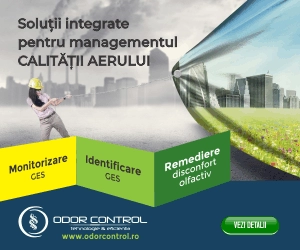Romania recycled only 14% of municipal waste for the last 8 years

Authors: Adrian Teampău, Associate Partner, Department of Tax and Legal Assistance and Laura Ciobanu - Manager, Environmental Consultancy, EY Romania
The European Union aims to become a global leader in waste management and recycling, but Romania is still one of the weakest Member States in this respect.
Why Romania has not managed to increase the recycling rate in the last 8 years?
In short, the reason for this agitation is based on the European waste recycling targets set in 2008. The main objective is that, by 31 December 2020, EU countries will have at least, for paper scrap metal, plastic and glass from municipal waste, a level of preparedness for re-use and recycling of at least 50% of the total amount of waste generated.
However, according to Eurostat, Romania recorded a very low recycling rate of municipal waste of only 14% (7% of material recycling and 7% of composting) in 2017, with only one percentage point in excess of 2010.
Taking into account that the disposal of waste at the landfill should be the last alternative to waste management, it is alarming that its rate has reached 70%, while the recycling rate has been stagnating for over 8 years.
How is it that, although there are more than 20 existing waste legislation, are there still major issues?
Environmental legislation has begun to take shape since 2005, with the adoption of Emergency Ordinance no. 195/2005 on environmental protection, which stipulates that the local public administration authorities are obliged to ensure, through the public services and by the responsible economic operators, the taking of the sanitation measures of the localities. In 2011, Law no. 211/2011 on waste management, which required local authorities to ensure separate collection at least for the following types of waste: paper, metal, plastic and glass.
Hence, although this obligation has existed for over 7 years, leaving out of the well-known colored bells (which have not proved their usefulness), we have all noticed that only a few months have begun to rise on the ground floor of some blocks colored blue and yellow, which allow separate collection of paper and plastic waste.
Last summer, the Government issued an Emergency Ordinance (74/2018) in order to facilitate the implementation of European legislation on the circular economy and the implementation of the commitments made to the European Commission. Thus, the necessary economic instruments to be implemented are established: it pays for as much as you can, the extended liability of the producer, the guarantee-return system and the contribution to the circular economy.
At the same time, responsibility for fulfilling the conditions imposed by the EU was transferred to municipalities and intercommunity development associations (ADI). Taking into account that very few IDUs are functioning at this time and the infrastructure is underdeveloped, it will be almost impossible for them to develop and implement an efficient waste management system in less than two years.
Thus, almost a year after the emergence of the normative act defining how the entire packaging waste recycling / recovery mechanism will work, there are still many questions and the packaging waste recycling market is currently stuck in waiting for clarifications from the authorities.
In this context, the Ministry of Environment has undertaken the publication of a guide with recommendations for applying the legislative amendments introduced by GEO no. 74/2018, but it is not regulated by a Minister Order to have enforcement power.
What guidance, however, does this Guidance Guide provide?
Depending on the collection system implemented, the number of fractions collected separately from the sanitation firms may vary from 2 fractions (wet and dry) to 5 fractions (paper / cardboard, plastic / metal, glass, green waste and residual waste).
Town halls, which are responsible for ensuring the sanitation of localities, should provide the necessary investments for separate collection of waste and recyclable waste and update tariffs in order to integrate the extra costs incurred.
Discrete separate tariffs / taxes should be communicated to the beneficiaries (population and economic agents) in order to be aware of the importance of separate collection of recyclable waste.
Rules and sanctions for the population and economic agents
Citizens who do not correctly collect waste will have to pay fees / fees of 1.5 or 2-3 times higher than those set for the correct collection.
The sanitation operator will have the right to re-incinerate recyclable waste, or biogas, in waste residual waste with the same tariff as the above mentioned sanction if there is a degree of impurity higher than 25% for recyclable and 10% for biowaste. We are curious how the sanitation company will proceed to determine the percentage, given that no unitary national calculation methodology has been established.
In conclusion, we can say that there is already the majority of the ingredients necessary for the evolution of the waste collection and recycling system in Romania. The legal framework has been supplemented with the necessary tools, but it remains to be seen whether these recent clarifications are sufficient for Romania to start an upward trajectory in the field of recycling.
Only through active involvement and cooperation between the public and the private sector, together with the constant education of the citizens, we will be able to progress towards a circular economy. In the event of non-compliance with the obligations assumed, the Court of Justice of the European Union may impose on Romania a lump sum payment exceeding EUR 1 million plus penalties for each day of delay.






